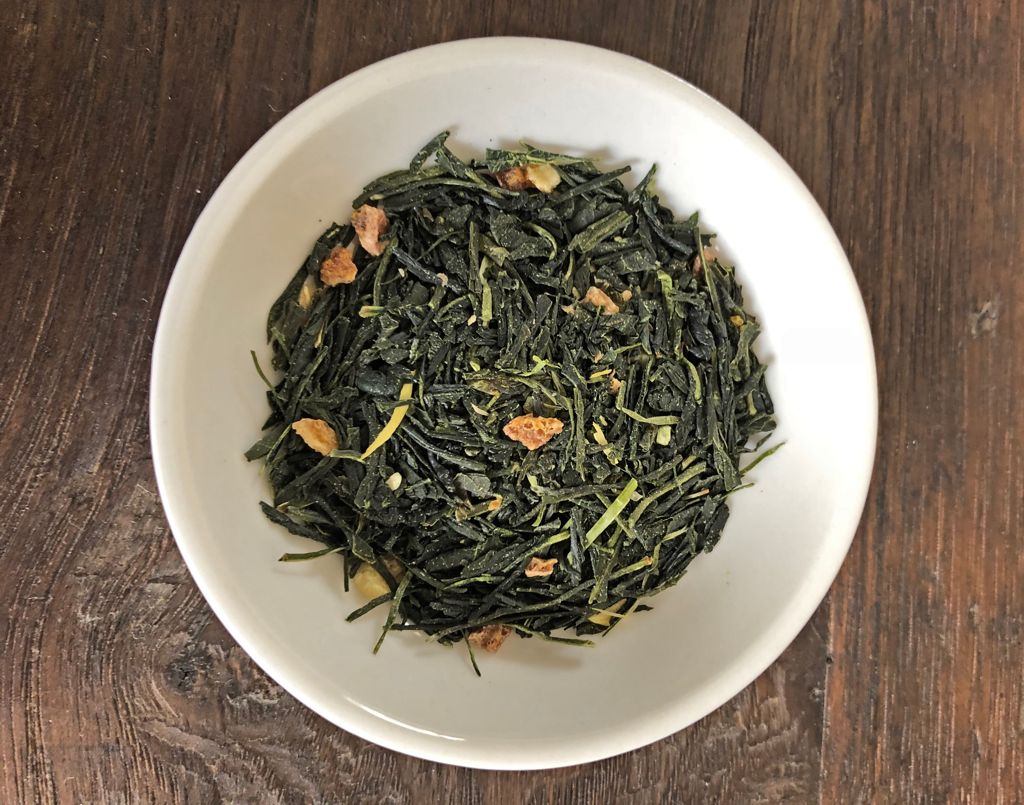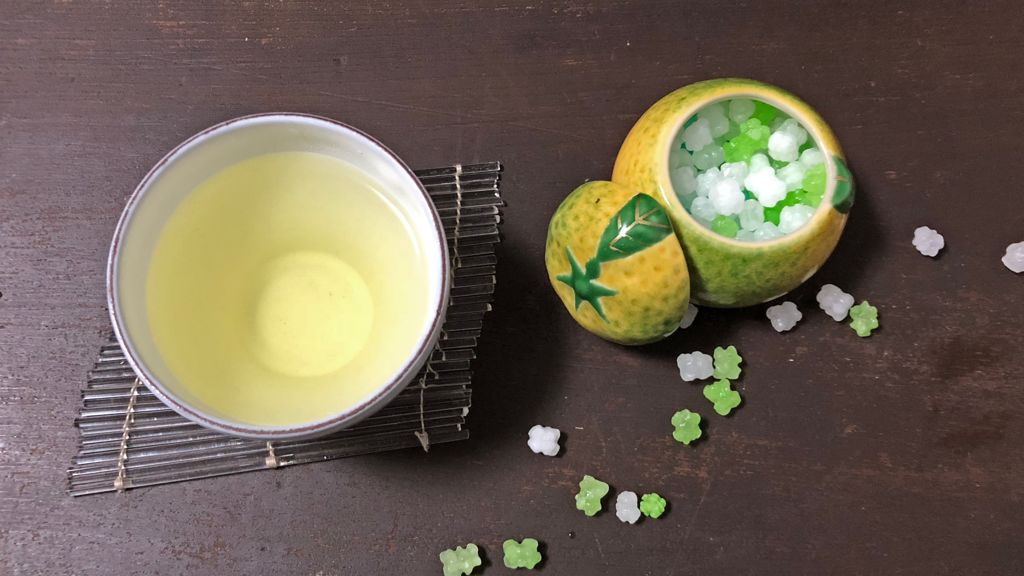November 2018 – Yuzu Sencha from Uji and Tokushima
This month we selected a Yuzu Sencha (柚子煎茶). This is not exactly what I would call an authentic green tea, however it's a nice green tea mixed with yuzu zest.

Yuzu Sencha
Yuzu (柚子) is a citrus fruit. Japan is the number one country for the production and consumption of yuzu in the world. In general, we don’t eat yuzu as-is, because it is too bitter and sour. However, it does have a very pleasant aroma. Therefore, we make good use of for cooking. For example, we make yuzu jam and yuzu gelato, or use grated yuzu peel or yuzu juice as seasoning in various Japanese recipes.
Yuzu grows wild everywhere in Japan, especially in Shikoku (四国). It is almost always organic, because yuzu is strong against insects and diseases. So there’s no need to sprinkle pesticides and other chemicals on yuzu trees.
Yuzu chips form the prefecture of Tokushima (徳島) in shikoku are mixed with green tea well elaborated from Uji, Kyoto (宇治, 京都). The tea prepared like this has a refreshing scent and a little bitter aftertaste. It is especially recommended to drink it after sports or fat and large meal.
For this tea, I've chosen Konpeitō (金平糖), tiny sugar candies of Portuguese origin “Confeito”, brought in Japan over 400 years ago. The particles of yuzu intermingle with this tiny candy in the mouth pleasantly.

No part of Yuzu is wasted
Maybe you have heard the expression “Mottainai (もったいない)” before? It means “Such a waste!” in English. Japanese people hate throwing away even peelings of food, so we try to use everything.
This way of thinking is comes from Buddhism. We should not waste anything, if we take away someone or something’s life. Yuzu is a good example. We do not throw away seeds and peels after cooking. We can make yuzu lotion with the seeds and alcohol or purified water; and detergent with the peels and water.
Yuzu is used not only for cooking, but we also put one or two yuzus in a bathtup in winter instead of bath salts. Because the season of yuzu is between autumn and winter. As the saying goes: “You never catch a cold, if you take a bath with yuzu during the winter solstice" (December 22th in 2018).
Here’s a wordplay in Japanese: "Yuzu ga kiku tōji" which can mean(融通が効く湯治) "Hot spring cure is good for flexibility" and (柚子が効く冬至) "Yuzu is good for the winter solstice". We image the two possible writings when we hear this sentence. Yuzu (either the fruit "yuzu" or "flexibility") and tōji (either "hot spring cure" or "winter solstice").
Yuzu bath is said to be effective for improving blood circulation, beautiful skin, diet and relaxation. Only good things! The producer named Fukujuen (福寿園) recommends putting used tealeaves in the bathtub after an infusion of Yuzu Sencha. Thus, you too can harness the spirit of “Mottainai”!
Brewing Yuzu Sencha
The amount of tea leaf should be adapted according to the desired taste: it should be around one teaspoon (3 grams) of Yuzu Sencha for 200ml (7oz) of spring water. The infusion should last one minute in water at 90ºC (190ºF). Do not forget to pour until the very last drop!
If you have questions about Japanese teas, please do not hesitate to contact us!
